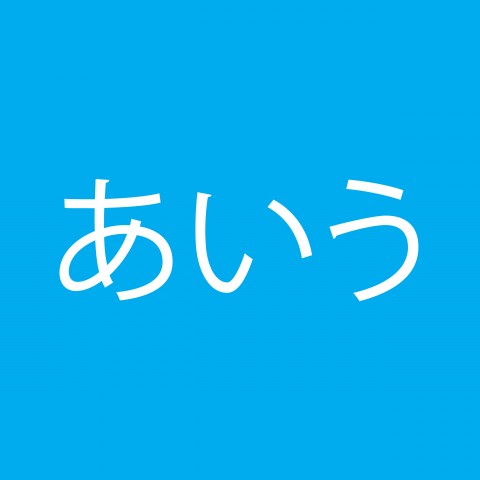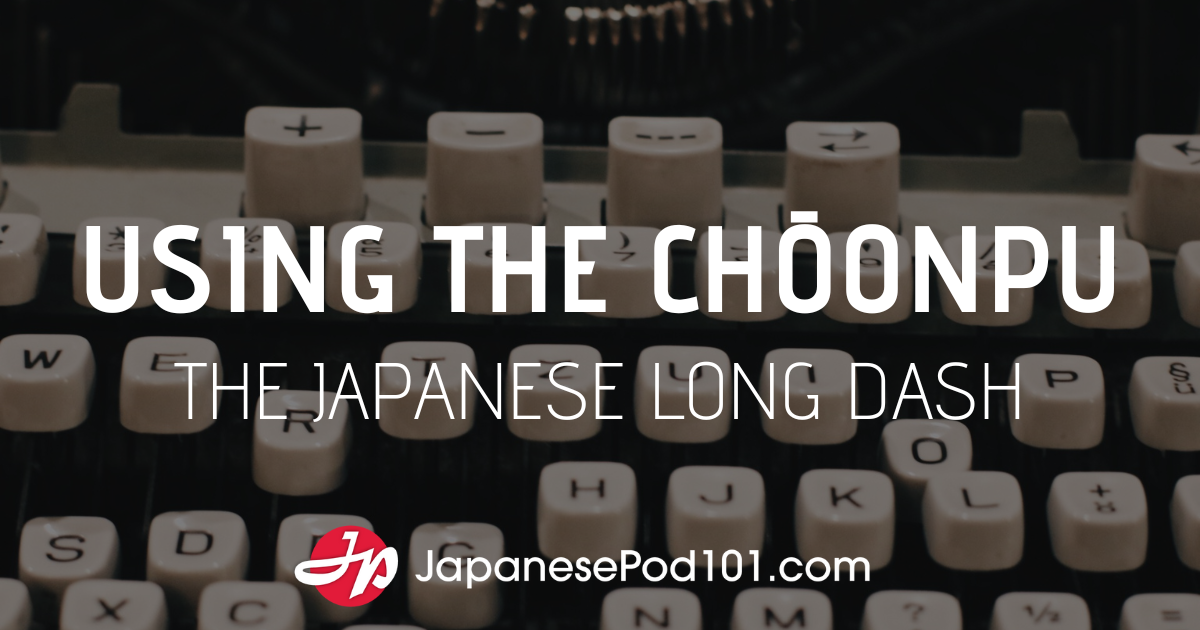
If you’re interested in learning the Japanese language but haven’t started yet, you may still be wondering: “Is Japanese hard to learn?” or “What are the hardest and easiest parts of learning Japanese?” No worries! We’ll explain everything you need to know about learning Japanese right here in this article.
Japanese is a unique and fascinating language. Although it’s spoken primarily in Japan, knowing the language is useful not only for fans of Japanese anime and manga, but also for those traveling in Japan. Even a basic understanding of Japanese will allow travelers to enjoy Japan’s wonderful culture to the fullest extent possible, and it’s essential for business if you’re interested in the Asian market.
Considering that Japanese is a major language with 128 million speakers, you can find plenty of language-learning resources. These can range from ordinary textbooks to subcultural “live” materials, such as content on YouTube and Netflix—not to mention the most useful online Japanese-learning platform, JapanesePod101.com!
In this article, we’ll introduce what it’s like to learn Japanese, including what makes Japanese difficult for some learners (and things that learners find pretty easy). We’ll also give you some tips on how to start learning Japanese in the fastest, easiest way possible.
Let’s get started!
 Table of Contents
Table of Contents
- Is it Hard to Learn Japanese?
- The Easiest and Hardest Parts of Learning Japanese
- Want to Learn Japanese? Here’s Where You Should Start!
- Why is JapanesePod101 Great for Learning Japanese?
- Conclusion

Fast, easy learning at JapanesePod101.com!
1. Is it Hard to Learn Japanese?
Or rather, is it hard for English-speakers to learn Japanese?
According to the language difficulty rankings by FSI (Foreign Service Institute), Japanese is a Category 5 language. This is the most difficult category, based on a scale of 1 to 5, and the ranking indicates how many hours of learning a native English-speaker would need to reach General Professional Proficiency in both Reading and Speaking.
However, the difficulty of Japanese for you depends on a number of factors, such as:
- Your learning goals
- Your mother tongue
- How interested you are in the Japanese language and culture
For example, if your learning goal is to be able to have daily conversations (speaking and listening), then learning Japanese may not be as difficult as you think. But if your goal is to be able to read Japanese newspapers and write business documents in Japanese, then keep in mind that this is an extremely difficult task for those who speak English or a Romance language (but fairly easy for Chinese- and Korean-speakers).
In addition, contrary to popular belief, spoken Japanese is said to be relatively easy to master when compared with other languages. Japanese has only five vowel sounds and thirteen consonant sounds, while English has twenty vowel sounds and twenty-four consonant sounds. Moreover, Japanese is a flat-sounding language which doesn’t use many tones or pitches. Thus, English-speakers and speakers of other non-tonal languages can easily learn how to speak and listen to Japanese!
2. The Easiest and Hardest Parts of Learning Japanese
In the following sections, we’ll go over the basics of what makes Japanese hard to learn (and how to overcome those issues). But first, let’s look at the easier aspects of Japanese!
A- What Makes Japanese Easy?
1 – Listening & Speaking
For most people, the goal of learning a new language is to be able to have conversations in that language. Conversation, as one of the most essential parts of communication, requires listening and speaking skills. In this regard, Japanese is actually an easy language to learn!
As mentioned in the previous section, Japanese is a flat-toned language with only five vowels and thirteen consonants. Compared to other languages that have more complex and difficult-to-pronounce sounds, as well as distinct tones and pitches, Japanese is rather simple.
English-speakers, who have already mastered twenty vowel sounds and twenty-four consonant sounds, will have little difficulty listening to and pronouncing Japanese words. (On the other hand, Japanese people always struggle to understand spoken English and pronounce English correctly. It’s difficult for Japanese people to tell the difference between word pairs like club and crab, bun and van, bowling and boring, etc.)
Even if you’re a beginner, you’ll be able to easily recognize and imitate Japanese sounds. There’s no need to be afraid of making mistakes here. Practice speaking as soon as you feel ready!

Speaking and listening are essential skills for conversation!
2 – Simple Grammatical Rules
No Article Needed
In Japanese, you don’t need to put an article in front of nouns. There’s no “a friend” or “the friend,” it’s just “friend,” or 友達 ともだち (tomodachi). How simple is that!
In English, you need to think about whether you should put “a” or “the” in front of a certain noun. Some Romance languages have even more complicated article variations, such as the Italian “un, una, la, le, il, lo, l’, gli, i.”
In Japanese, you only need to say the noun!
Words Don’t Change
In addition, Japanese words (nouns, adjectives, and verbs) do not change based on number, gender, or person. Japanese words are neutral, and there’s no feminine/masculine distinction that affects grammatical forms.
In English, “s” is usually added to a noun to make it plural (such as “friends“). And in Italian, nouns, articles, and adjectives change their forms according to the number (singular/plural) and the gender: mia amica é simpatica (“my friend is nice” – one female) / mio amico é simpatico (“my friend is nice” – one male) / miei amici sono simpatici (“my friends are nice” – plural).
These complicated rules don’t exist in Japanese! This also applies to Japanese verbs: there’s no variation of “is/are” or “do/does” in Japanese.
- 私の友達は親切です。
Watashi no tomodachi wa shinsetsu desu.
“My friend(s) is(are) kind.”
No matter how many people there are, and whether the person is female or male, words don’t change form in Japanese. Super-simple, right?
If you want to specify whether something is singular or plural, you only need to add a number or a word that expresses amount, such as “a few,” “many,” “hundreds of,” etc.
- 私は車を1台持っています。
Watashi wa kuruma o ichi-dai motte imasu.
“I have a car (one car).”
- 彼は1日にたくさんの本を読みます。
Kare wa ichi-nichi ni takusan no hon o yomimasu.
“He reads many books a day (in one day).”

Whether it’s one or three, “apple” is りんご (ringo) in Japanese, with no article.
Only Two Conjugation Exceptions
There are only two verbs that have irregular Japanese conjugation: する (suru), meaning “do,” and 来る (kuru), meaning “come.” Only two irregular verbs! Anyone can easily memorize them.
When you think about irregular verbs in English, the list is tremendously long: “be, go, come, eat, get, say, buy, run, know, take, put, read, send, meet, leave, pay, lay, think, teach, sing, ring, write, begin, drink, fly, draw, bring, feel, fall, have, hear, make, see, sit, shine, mean, stand, sleep….” and a lot more!
This is not the case in Japanese, so go ahead and let out a deep sigh of relief.
3 – Easy Tenses
There are only two tenses in Japanese: present and past. In order to mention something about the future in Japanese, use the present tense and add a word that indicates the future, such as “later,” “tomorrow,” “next month,” etc. In addition, Japanese does not have the perfect tense.
- 私は図書館へ行きます。
Watashi wa toshokan e ikimasu. [Present Tense]
“I go to the library.”
- 私は明日図書館へ行きます。
Watashi wa ashita toshokan e ikimasu. [Present + ashita (“tomorrow”)]
“I will go to the library tomorrow.”
- 私は図書館へ行きました。
Watashi wa toshokan e ikimashita. [Past Tense]
“I went to the library.”
When learning verb tenses, many people find that Japanese is much easier and simpler than English, which has multiple variations: “I go to / I’m going to / I will go to / I went to / I have been to / I have gone to / I had gone to …”
B- Why Japanese is Hard to Learn
1 – The Japanese Writing System
The Japanese language uses three different scripts: Hiragana (ひらがな), Katakana (カタカナ), and Kanji (漢字). This can be a bit confusing for beginners.
Hiragana is a phonetic system with forty-six characters which represent all of the sounds in spoken Japanese. It also includes a few variations which are closely related to specific characters and their sounds. For example, だ (da) is a variation of た (ta).
Katakana also has forty-six characters, which represent the same sounds as Hiragana. It is used mainly for writing words called 外来語 (Gairaigo), which are “imported” from foreign languages such as English. For example, アイスクリーム (aisu kurīmu) means “ice cream.”
Kanji originated from China and has been adopted by the Japanese language. Some Kanji characters are written using the same characters as in Traditional Chinese, but the way in which they’re used and read are unique to Japanese. For example, 新聞 means “newspapers” and it reads as しんぶん (shinbun) in Japanese. But these same characters mean “news” in Chinese, and are pronounced as xīnwén. It’s said that there are 3000-4000 Kanji characters, but there are only 2000 commonly used 常用漢字 (jōyō kanji) characters that are taught to children in schools.
If you’ve gotten the impression that the Japanese writing system is “a bit too complicated,” don’t worry too much!
The good news is that the Latin Alphabet is also used in Japan. Japanese people refer to it as ローマ字 (Rōma-ji), or “Roman letter,” and these letters are used to write a phonetic translation of Japanese words. People who have just started learning Japanese learn Hiragana and Katakana together with Rōma-ji.
In addition, all Japanese sounds end in a vowel (the only exception is ん [n]), and all of the Japanese syllables are very simple sounds. Every sound is written in Hiragana and Katakana. (There is no variation in the pronunciation of a given Japanese letter, such as “A” in the English words “family,” “agent,” and “away.”)
This will make Japanese pronunciation super-easy to learn! You just need to get used to Hiragana and Katakana and how their sounds are pronounced.
2 – Japanese is an SOV Language
A lot of English-speakers get confused with the Japanese word order.
The Japanese sentence structure is SOV, which means that the basic word order in a sentence is S (Subject) – O (Object) – V (Verb). English, on the other hand, is an SVO language: S (Subject) – V (Verb) – O (Object).
(S) (O) (V)
Japanese: Watashi wa toshokan e ikimasu. 私は図書館へ行きます。
( I / the library to / go. )
(S) (V) (O)
English: I go to the library.
The fact that Japanese verbs are always placed at the end of a sentence can be very confusing at first for SVO language-speakers.
You don’t know if it’s an affirmative sentence or a negative one until you hear the very end of that sentence, especially if a sentence is very long.
- 私は昨日友達と話した後に図書館へ行きませんでした。
Watashi wa kinō tomodachi to hanashita ato ni toshokan e ikimasen deshita.
( I / yesterday / friend / with / talked / after / the library / to / go / not / did )
= I did not go to the library after I talked to my friend yesterday.
You may find this aspect of Japanese easier if you remember that the verb (and its negator, if there is one) will always be at the end of the sentence.
However, asking questions in Japanese is consistent and very simple!
There’s no need to change the word order or add a new verb like in English: “She went to the library.” vs. “Did she go to the library?”
All you need to do is add か (ka) to the end of a sentence and say it with a rising tone.
- ➢ 彼女は図書館へ行きます。
Kanojo wa toshokan e ikimasu.
“She goes to the library.”
- ➢ 彼女は図書館へ行きますか。
Kanojo wa toshokan e ikimasu ka.
“Does she go to the library?”
See how easy that is?

Japanese is an SOV language: 彼女は図書館へ行きます (Kanojo wa toshokan e ikimasu.) – She (S) / the library (O) / to / go (V).
3 – Honorific Language
Japanese culture is famous for its politeness and respect, and this cultural aspect is reflected in the language: 敬語 (Keigo), or “honorific language.”
Apart from the casual language, Japanese has the three forms of Keigo, which are:
- 丁寧語 (Teineigo) – “polite language”
- 尊敬語 (Sonkeigo) – “respectful language”
- 謙譲語 (Kenjōgo) – “humble language”
You don’t need to be able to use all of these respectful forms perfectly for daily conversations as long as you can use the basic polite form. However, you’ll often hear Keigo in Japan as a customer or during official/business occasions.
The difficult thing about learning Keigo is that there are different expressions for verbs, and you need to use the appropriate words according to the level of politeness and the person whom you’re referring to.
You can use Teineigo (polite language) to express things politely for more general situations. However, you can neither use Sonkeigo (respectful language) for your own actions nor use Kenjōgo (humble language) for someone respectful (elders, boss, clients, honored person, etc.).
For example, there are three different expressions for “come”:
[ to come : 来る (kuru) ]
- Teineigo (general politeness): 来ます (kimasu)
彼は毎日ジムに来ます。
Kare wa mainichi gimu ni kimasu.
“He comes to the gym every day.”
- Sonkeigo (respectful expression for others): いらっしゃいます (irasshaimasu)
田中様は一時にいらっしゃいます。
Tanaka-sama wa ichi-ji ni irasshaimasu.
“Mr./Ms.Tanaka comes at one o’clock.”
- Kenjōgo (humble expression for yourself): 参ります/ 伺います (mairimasu / ukagaimasu)
私が書類を持って参ります。
Watashi ga shorui o motte mairimasu.
“I will come with the documents.”
If you would like to know more about Keigo and common honorific mistakes, please see our article about Common Japanese Mistakes.

Honorific language is one of the hardest parts of learning Japanese.
3. Want to Learn Japanese? Here’s Where You Should Start!
Now that you know what makes the Japanese language hard to learn (and which parts are easy), have you decided you want to learn it after all? Great! Here are some tips from JapanesePod101.com:
1. Get Motivated
The very first thing you should do is get motivated!
What do you want to do after you learn Japanese? Learn more about Japanese culture? Travel to Japan for work, study, or holiday? Watch Japanese anime and read manga in the original language? Make new Japanese friends?
With your interests and purpose in mind, set a learning goal to keep you motivated. It doesn’t need to be a big goal at first, like passing the advanced level exam, but a small goal you’ll be able to reach quickly.
A small learning goal is something you can work on without too much effort. Examples might include making new Japanese friends online, learning ten new words everyday, watching Japanese TV series everyday, traveling to Japan, or speaking to Japanese people when shopping.
The important thing is to stay motivated and accumulate your achievements in small chunks.
The more motivated you are, the faster you will learn!
2. Learn the Basics
When learning a new language, it’s essential to understand how it works first.
Once you learn the ground rules, such as the sentence structure and pronouns, then focus on learning useful sentence patterns that you can use in a variety of situations. With the most useful and common sentence patterns and phrases, you can adjust and adapt them for new situations as you build your vocabulary.
For beginners, our Top 100 articles are very helpful for building up your vocabulary with useful nouns, verbs, and adjectives. You can also use Flashcards to check and review everything you’re learning.
3. Input, Output, and Repeat
No one can do well at something they’ve never tried before! If you want to be able to speak, then listen, speak, and repeat as many times as possible. Learning by doing is the golden rule for mastering a language.
Japanese, as mentioned above, is easy to learn when it comes to listening and speaking, so you can start practicing at home from Day 1. Check the pronunciation of new words with audio using our Vocabulary Lists, and then repeat the word after the audio recording. After repeating a word or phrase several times, you’ll get used to the sounds and how to pronounce them.
If you’re living or traveling in Japan, you’re privileged with plenty of opportunities to practice in real life. Don’t be afraid, and make the most of your opportunities.
Even if you live outside of Japan, you can take advantage of the Internet age to access numerous learning materials, including JapanesePod101.com and our YouTube channel! You can even interact and practice with your own personal teacher using our MyTeacher program.
4. Have Fun!
To learn and improve your Japanese skills, it’s crucial that you study and practice hard. But don’t let yourself get too bored with traditional learning! Learning is more than studying at a desk with textbooks.
Entertain yourself while learning by watching Japanese movies and series, listening to music, reading comics and novels, etc.
Speaking, listening, reading, and writing are very separate skills, and you need to work on honing each one, depending on your goals. If your learning goal is, for example, focused on practical daily conversations, then such entertainment sources are very helpful. With video, audio, and subtitles, you’ll be able to learn a lot of practical vocabulary and phrases.
Also, check out our articles on how to learn Japanese with netflix and Anime! There are plenty of entertainment sources for learning Japanese.

Learn Japanese with entertainment!
4. Why is JapanesePod101 Great for Learning Japanese?
Many people think that Japanese is a difficult language, but this is only partly true. In reality, Japanese is a unique and interesting language which is actually easier to learn than you think. It’s just different from English, and learners require some strategic planning to learn it effectively.
JapanesePod101 offers a variety of effective and fun learning content for beginners and advanced learners.
1. Comprehensive and Practical Approach
JapanesePod101 offers a comprehensive and balanced approach to help you improve your listening, speaking, reading, and writing skills, step-by-step. We also offer focused lessons that look at a particular aspect of the language or culture. Each lesson has easy-to-understand information to keep you hooked.
Depending on your level, you’ll go through effective study materials with audio to improve your listening skills, practice pronouncing new vocabulary, and do writing exercises. Tests and quizzes will also help you check your knowledge.
After each lesson, you’re ready to move forward. Every lesson covers a practical topic or theme that you would encounter in everyday life in Japan.
2. Incredible Free Content
JapanesePod101.com is free but surprisingly affluent with information! We offer a wide range of rich content for learners at every level.
Before beginning your lessons, you may want to take a placement test that will give you a better idea of where to start. Every level has multiple lessons that follow a storyline designed to keep you engaged and learn natural Japanese.
Our free content includes themed vocabulary lists, customizable flashcards to practice your vocabulary, and a dictionary tool where you can search for a word by Latin Alphabet (Rōma-ji) or Japanese. Some of these features can be downloaded onto your computer so you can use them offline!
3. Your Own Teacher
Along with the lessons, our Premium MyTeacher service can accelerate your learning. Yes, you can have your own Japanese teacher by upgrading your account!
With MyTeacher, you can practice your speaking, reading, and writing through interaction with your private teacher. You’ll get personal feedback and tips on how to improve your pronunciation and writing skills. This personalized program and weekly assignments will keep you going, and you’ll also have full access to our self-study learning system.
5. Conclusion
In this article, you’ve learned the answer to “Is Japanese hard to learn?” Learning Japanese is not as difficult as you may think, especially if your goals are focused on verbal communication.
If you would like to explore the Japanese language further, stay with JapanesePod101.com for the fastest and easiest way to fluency. With a variety of rich, free lessons and tools, your Japanese language skills will improve immensely.
Don’t forget that you’re not alone. When you use our MyTeacher service, your own teacher can always help you practice through personalized programs and assignments.
Before you go, let us know in the comments if you feel ready to start learning Japanese. If not, we’d love to hear your questions or concerns, and we’ll be glad to help any way we can.
Now, it’s time to get started at JapanesePod101.com!










